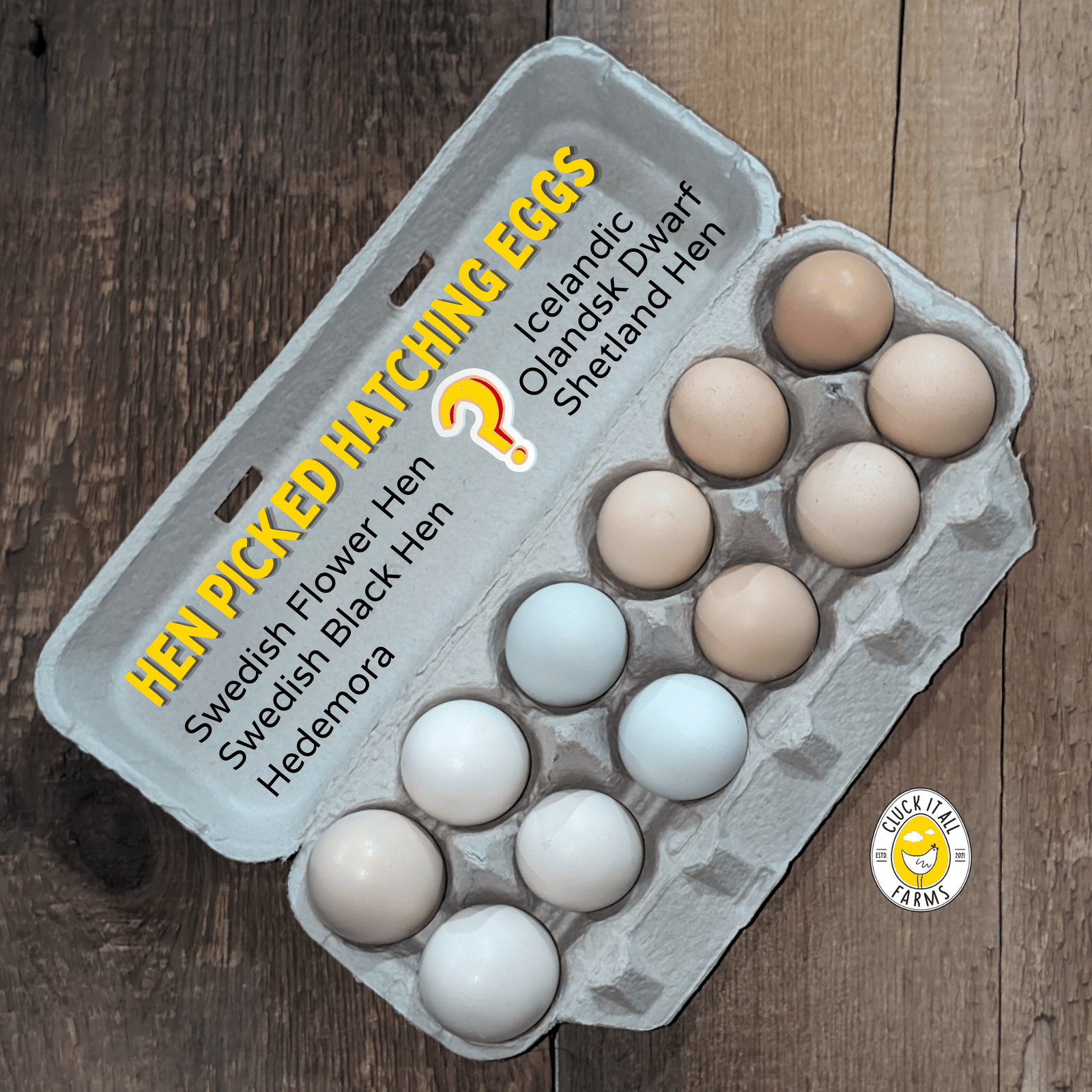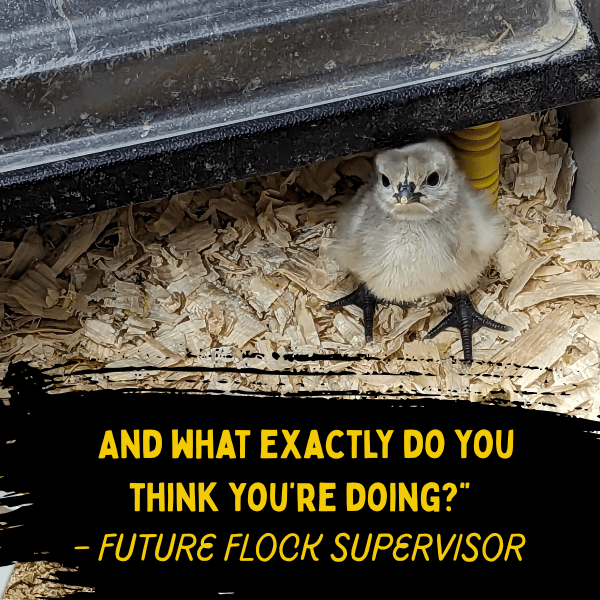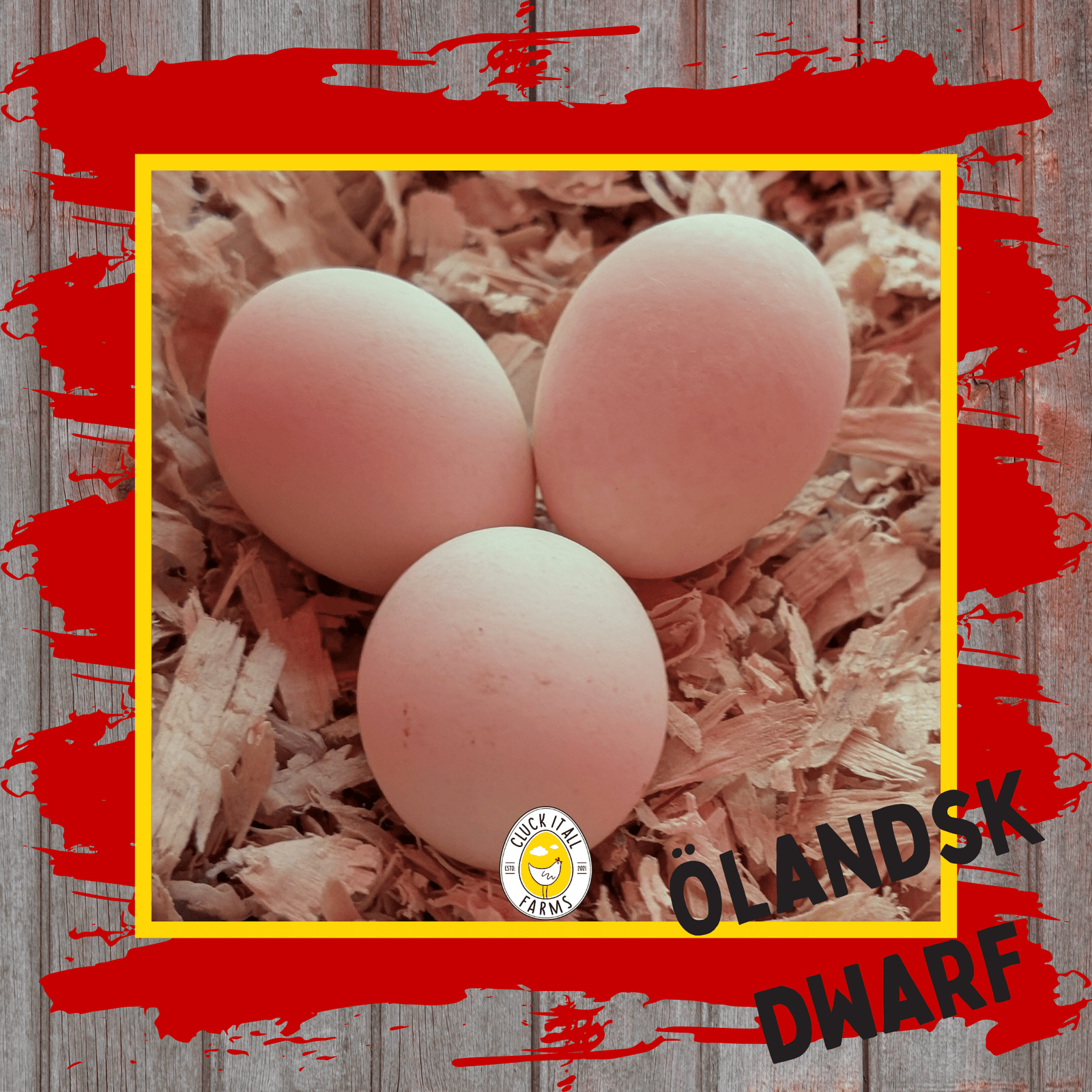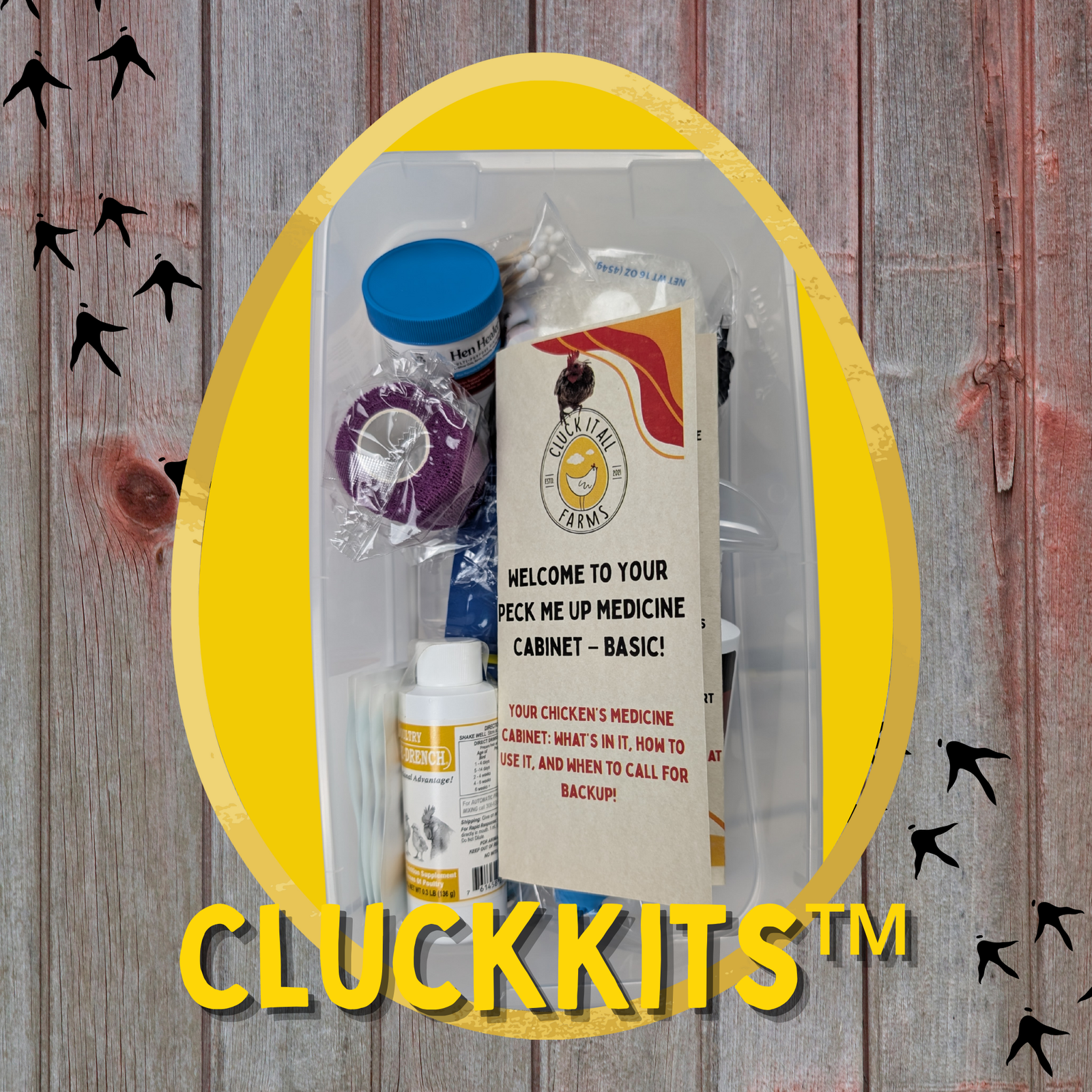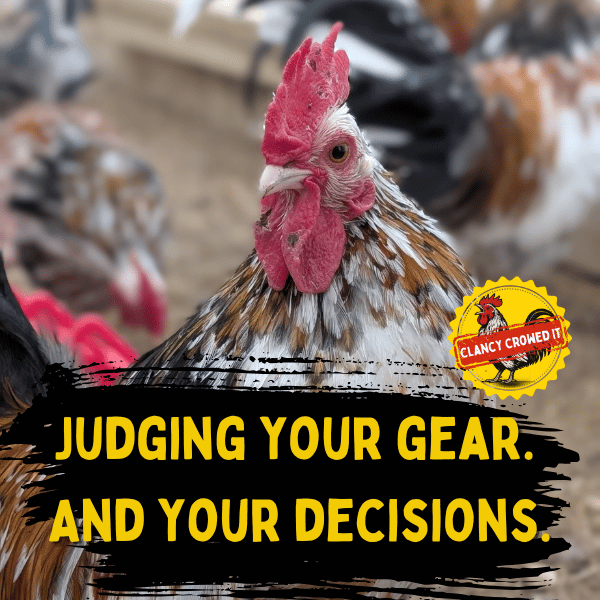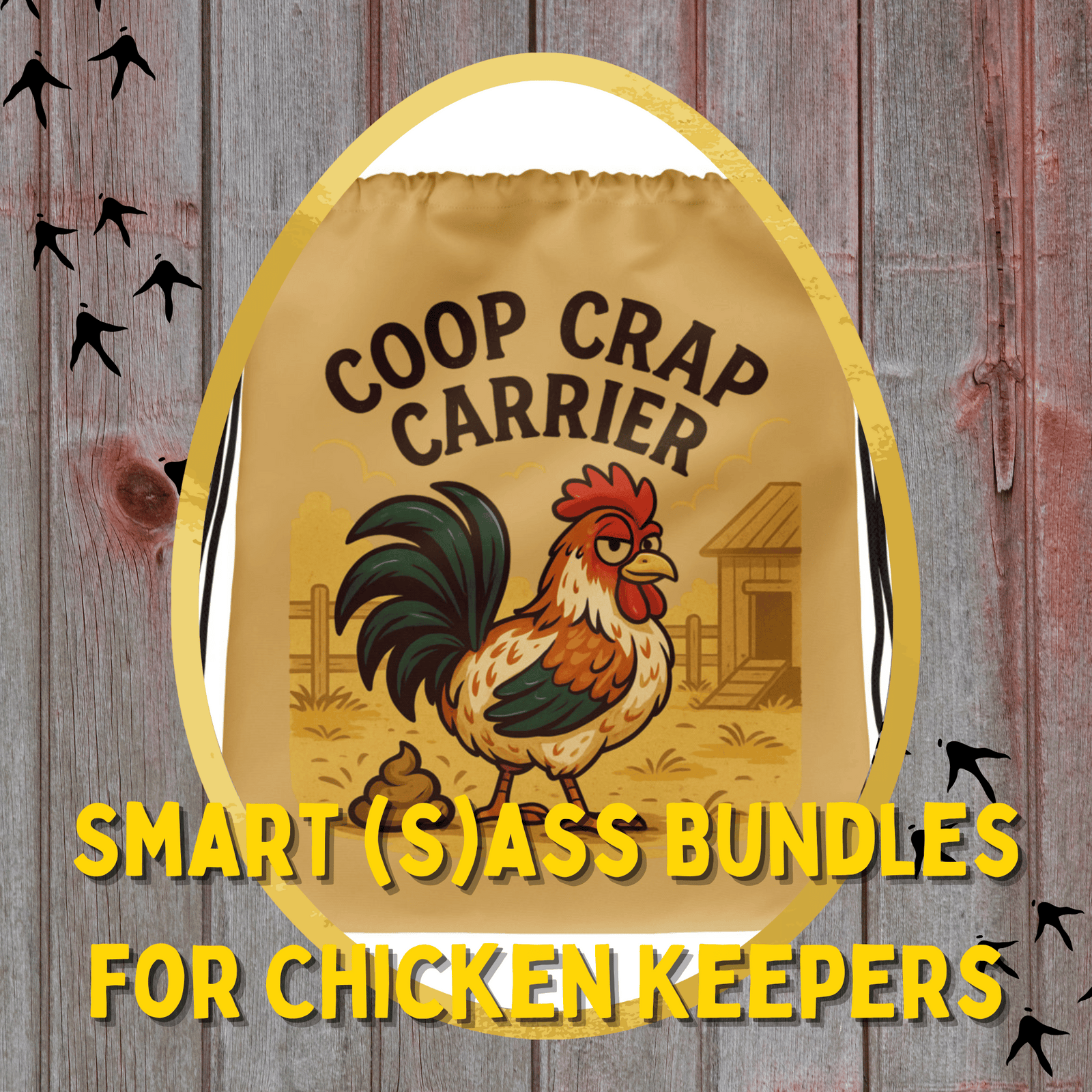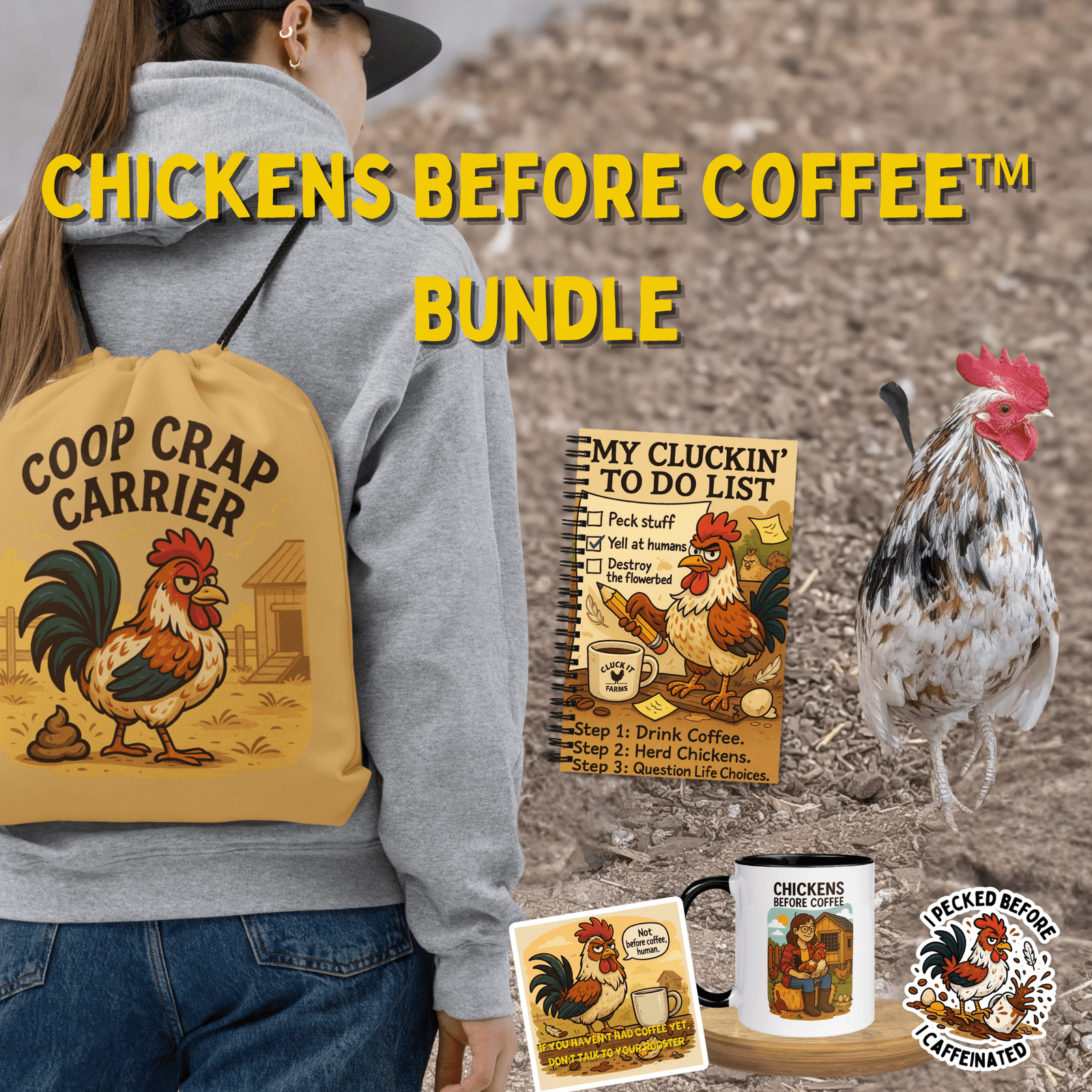If the Shetland Isles can produce ponies, sheep, and cattle that shrug off sideways rain… you’d better believe the chickens from there are just as tough.
Shetland Hens are a traditional island landrace from the Shetland Isles north of Scotland. They weren’t created for shows, they weren’t engineered in breeding pens, and they definitely weren’t built for Instagram. They were shaped by crofters who needed birds that could lay, raise chicks, and keep going in real weather.
They’re dual purpose, blue/green egg layers, polite and curious, and just odd enough to be interesting, with feather crests called tappits that look like the wind styled them on purpose.
At Cluck It All Farms, we’re working to keep this rare population going here in the States.
🌬️ A Landrace from the Edge of the Map
The Shetland Isles are not gentle chicken country:
-
Cold, wet, windy
-
Very few trees
-
Open, exposed landscapes
-
Historic crofting farms that relied on hardy, multipurpose animals
Shetland livestock evolved to match that environment:
small-to-medium, tough, thrifty, and smart.
Shetland Hens likely developed from old European chickens brought in by Norse and later Scottish settlers, then shaped over centuries by island life. They were never “designed.” They were kept or culled based on whether they could:
-
Lay reliably
-
Raise chicks
-
Survive the climate
There is no formal gene bank program for Shetland Hens like there is for some Swedish landraces, but they are still a heritage island population worth preserving.
✈️ How Shetland Hens Reached the U.S.
Shetland Hens are still rare in North America.
The U.S. population traces back to a small import by Greenfire Farms, who brought birds over from the Shetland Isles. From that starting point, only a handful of preservation-minded breeders have continued the line, trying to keep them as close as possible to their island roots.
If you’re keeping Shetland Hens in the U.S., you’re not just playing with a fun “project bird”, you’re part of the reason they still exist here at all.
🐓 What Shetland Hens Look Like
Shetland Hens are true dual-purpose birdsmeant to put both eggs and meat on a crofter’s table.
⚖️ Size & Build
They’re not bantams and they’re not oversized blocks of fluff. They sit right in that practical, old-farm middle:
-
Hens: ~4–5 lb
-
Roosters: ~5–6.5 lb
They carry a solid, useful frame: enough body to be worth processing if needed, but still active and athletic. Think “hardworking farm bird,” not “feather sofa.”
🎨 Color & Pattern
In the U.S., the Shetland population (from the Greenfire import) tends to be strongly black-based. Within that, you’ll commonly see:
-
Birchen
-
Partridge
-
Wheaten
-
Mostly black birds with patterned hackles or body feathering
It’s still a landrace, so you’ll see variation, just within that black-based foundation.

💈 Tappits (The Crests)
On Shetland, the crests themselves are called tappits.
A tappit is just the feather crest, and it can show up in different “styles”:
-
Full tappit
-
Big, rounded puff
-
A bit like a toned-down Polish
-
-
Smaller, swept-back tappit
-
Looks like a feather mullet
-
Very on-brand for a bird that lives in a permanent gale
-
-
No tappit at all
-
Crestless birds happen and are historically normal
-
All three show up in the Shetland population and are part of what makes it a living landrace, not a standardized showroom breed.
👂 Ears, Comb & Legs
-
Ear lobes: Red, sometimes with a little white mixed in
-
Comb: Single comb is typical
-
Legs: Smooth (no leg feathering)
-
Leg color (our flock): Various shades of slate, from lighter to darker tones
Put all that together and you get a bird that looks like it actually belongs in a rugged, windy place because it does.

🥚 Eggs & Broodiness
Shetland Hens were kept to feed people, not to win egg-count trophies.
🥚 Egg Production
-
Roughly 150–200 eggs per year under good care
-
Egg colors:
-
Most lay blue or green eggs
-
Occasionally you may see a hen that lays brown or cream instead
-
-
Egg size: Medium to large
So no, they’re not hybrid-level egg machines, but they give a steady, respectable yield with a whole lot more personality.
🐣 Broodiness & Mothering
Broodiness is not a flaw here, it’s one of the reasons people kept Shetland Hens in the first place.
-
Broodiness is a desired trait in this population
-
Many hens will go broody at least occasionally
-
Once they commit to a clutch, they’re reliable, steady sitters
-
They tend to be good, attentive mothers, raising robust chicks
If you want hens that can both lay and raise future flocks, Shetlands have that built in.

😌 Temperament: Chill, Polite, and Thoughtful
Shetland Hens have a very particular vibe.
They’re:
-
Pretty chill – not high-strung, not screamers
-
Polite – move around you without bowling you over
-
Friendly enough – especially once they trust you
-
Curious – they want to know what you’re doing…
…but they’re also cautious, and the tappits are part of the reason why.
The Tappit Vision Tradeoff
Those big feather crests are adorable, but they do interfere with vision, especially overhead and to the sides.
That means:
-
They’re not the most hawk-aware birds in the world
-
Sudden overhead movement can spook them
-
They rely more on sound, flock cues, and what’s happening at ground level
So instead of being ultra-alert sky watchers, Shetlands tend to be:
-
Thoughtful
-
Measured
-
“Pause and assess” birds rather than “blind panic” birds
They’re genuinely pleasant to work with, steady, kind, and observant, as long as you remember the hairdo sometimes gets in the way.
🧬 Why We’re Preserving Them
Shetland Hens aren’t a big-name breed. They’re not on every hatchery website. There’s no fancy marketing machine behind them.
That’s exactly why they matter.
They bring:
-
Genetic diversity to a chicken world drowning in the same few crosses
-
Cold, wet weather resilience
-
Built-in broodiness and mothering behavior
-
Real dual-purpose utility
-
A direct connection to a very old crofting culture where animals had to pull their weight
At Cluck It All Farms, we’re not trying to “improve” these birds. We’re trying to respect what they already are and carry that forward.
🧻 TL;DR for the Chicken Nerds
-
Traditional island landrace from the Shetland Isles
-
U.S. population descends from a Greenfire Farms import
-
True dual-purpose birds: hens ~4–5 lb, roosters ~5–6.5 lb
-
Black-based colors: birchen, partridge, wheaten, black, etc.
-
Crests are called tappits,can be big, small, or absent
-
Lay about 150–200 eggs/year, mostly blue/green, some brown/cream
-
Broodiness is desired, and they’re solid mothers
-
Temperament: chill, polite, curious, cautious (especially with big crests)
-
Not a show creation, an honest, functional, heritage flock bird

